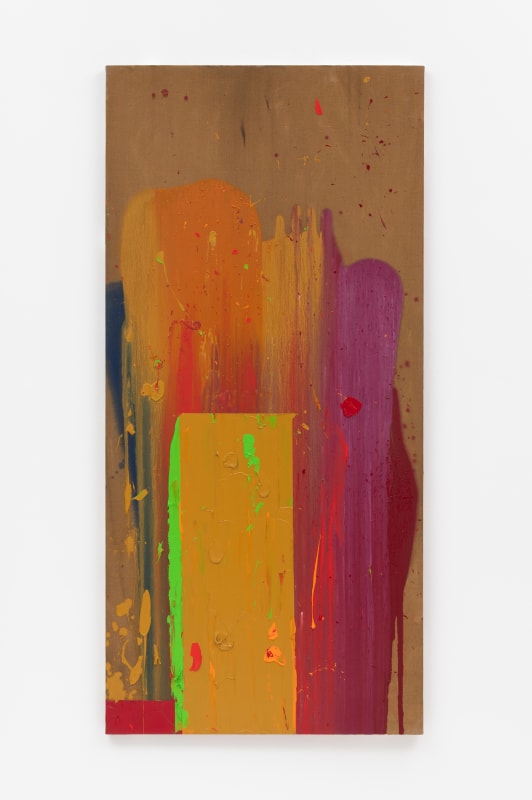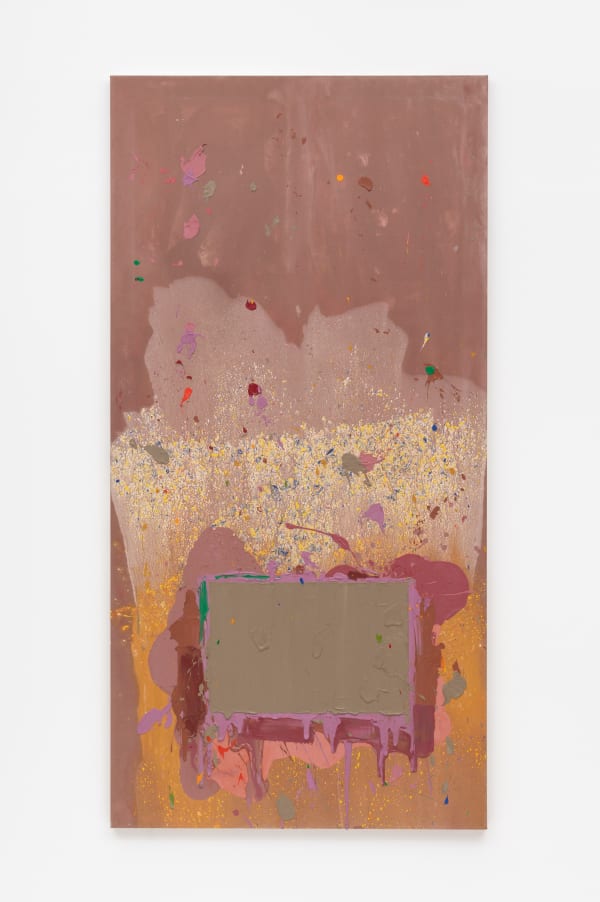John Hoyland: Thresholds: Paintings 1965–1970
Hales is delighted to announce Thresholds: Paintings 1965-1970, a solo exhibition of work by British artist John Hoyland. The exhibition highlights a period of great artistic discovery and marks his arrival in New York. During this time Hoyland had an early career retrospective at the Whitechapel Gallery, London in 1967 and in 1969 he represented Britain at the Sao Paulo Biennial alongside sculptor Anthony Caro, who became a lifelong friend. Hoyland traveled extensively between 1965-1970, visiting the Caribbean for the first time in 1969 and holding solo shows in Milan, London, Montreal, New York, Los Angeles, and Munich.
Hoyland (b.1934 Sheffield, UK - d.2011 London, UK) was one of the most inventive and dynamic abstract painters of the post-war period. Over the span of more than a half-century his art and attitudes constantly evolved. A distinctive artistic personality emerged, concerned with color, painterly drama, with both excess and control, with grandeur and above all, with the vehement communication of feeling.
Hoyland first came to New York in 1964 on a travel grant awarded to him after his inclusion in the New Generation 1964 at the Whitechapel Gallery, London. He was already keenly aware of who he wanted to meet, having been profoundly affected by seeing the New American Painting show at Tate in 1959. In those initial short months, he met with key figures in the New York School, including his hero Mark Rothko, as well as the emerging color field painters. Associations developed with Clement Greenberg, Helen Frankenthaler, Kenneth Noland, Jules Olitski and he became friends with Robert Motherwell and Larry Poons. Hoyland proceeded to regularly return to New York, living with his then partner soul singer Eloise Laws, and working in the city for extended periods in the late 1960s and early 1970s. His first show in New York was with Robert Elkon Gallery in 1967, afterwards developing a relationship with the celebrated André Emmerich Gallery, first showing there in 1970. Emmerich wrote to Hoyland in 1970: 'Your new paintings are without a doubt some of the most beautiful paintings I have seen in a very long time.'
Thresholds: Paintings 1965-1970 spans a time of deepening experimentation for Hoyland, with formal devices, spatial interplays, color and the new medium of acrylic paint. This exhibition highlights the development from his use of greens and reds in stain paintings to the introduction of high key color combinations and heavier impasto. A pivotal moment came with Greenberg introducing Hoyland to the work of Hans Hofmann, influencing him to employ thicker layers of pigment and a renewed commitment to figure and ground. These key works from 1965 to 1970 bridge a new way of making for Hoyland, tracing the creation of a new vocabulary in abstract painting. The art critic Mel Gooding noted that from 1965 'the distinctive device of a decisively painted opaque rectangle becomes for the next ten years a principal player in Hoyland's formal repertory, an unmistakable personal motif undergoing diverse permutations.' [1]
In the earliest works in the show from 1965 and 1966, the influence of staining techniques used by Helen Frankenthaler, Kenneth Noland and Morris Louis is evident. However, unlike his New York counterparts, Hoyland never fully dropped the illusion of space and perspective. Multiple layers of staining and changing intensities create a tension, differentiating Hoyland's work from the American scene. There are clear suggestions of the outside world in his paintings, especially architecture. Architectural features can be found throughout the show from the earliest paintings where columns of paint or blocks are reminiscent of an industrial cityscape to the later 'door' shaped paintings. In an animated approach to painting, rectangles become building blocks and containers of color in a spatial drama. Around the rectangles, dynamic constellations of poured, stained and splattered paint forms are contrastingly light, creating rich possibility in a dreamlike space.
[1] Mel Gooding, John Hoyland, London: Thames and Hudson, 2006, p71
Hoyland had many career highlights, including winning the John Moores Painting Prize in 1982. In 1991 he was elected a Royal Academician and in 1999, he was appointed Professor of Painting at the Royal Academy Schools. A solo exhibition at the Royal Academy in 1999 was followed in 2006 with a retrospective at Tate St Ives, and in 2015 a major survey inaugurated Damien Hirst's Newport Street Gallery. In 2021, Museums Sheffield hosted John Hoyland: The Last Paintings, a solo exhibition celebrating the final era of the artist's oeuvre. In 2023, Daugavpils Mark Rothko Centre, Latvia staged a solo exhibition of Hoyland's work.
Hoyland's work is in many collections, including the Royal Academy of Arts, UK; Tate, UK; National Galleries of Scotland, UK; National Museum of Wales, UK; National Museums of Northern Ireland, UK; The British Museum, UK; Victoria and Albert Museum, UK; The Hepworth, Wakefield, UK; Arts Council Collection, UK; Government Art Collection, UK; British Council, UK; Museum of Modern Art, NY, USA; Museum of Fine Arts, Boston, MA, USA; Virginia Museum of Fine Arts, VA, USA; Philadelphia Museum of Art, PA; Yale Centre for British Art, New Haven, CT, USA; Albright-Knox Art Gallery, NY, USA; Musée des beaux-arts de Montréal, Canada; Museum of Modern Art, Rio de Janeiro, Brazil; Museum Liaunig, Neuhaus, Austria; Art Gallery of New South Wales, Australia; Art Gallery of South Australia, Adelaide; and Art Gallery of Western Australia.







